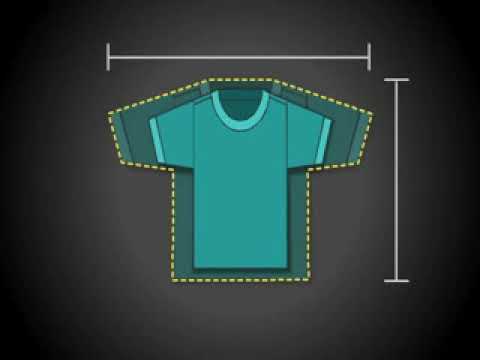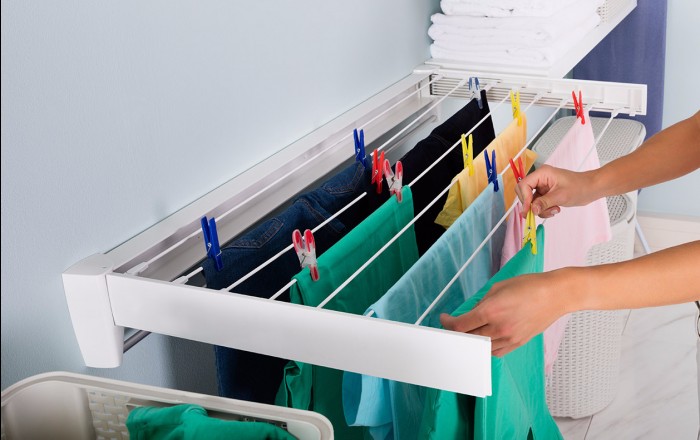1. Detergent is put in washing machine. AATCC 1993 standard detergent (not contain fluorescent brightener) suits for Type B washing machine adding materials from the top, while No Phosphorus ECE Standard Detergent (contain fluorescent brightener) suits for Type A and Type B washing machine.
2. Washing temperature, water level, and washing time are set. Prepared sample and washing accompany are put in detergent, handled as chosen washing program.
3. After fabrics are washed, you can choose one of the following 6 drying methods to dry it:
Hanging dry — after dehydration, fabric is perpendicular to the ground in the length direction, hanging on a string or smooth pole and drying in room temperature and stationary air.
Drip dry — Sample without dehydration is perpendicular to the ground in the length direction, hanging on a string or smooth pole and drying in room temperature and stationary air.
Flattened dry — sample is flattened on the drying rack with horizontal screen, removed wrinkles to make it flat but not to let it deform or extend, dried in the room temperature.
Flat pressing — sample is put on the flat pressing machine, removed bigger wrinkles by hands. As request of drying sample, putting down the pressing head, sample is hot pressed in a or more short periods until it is dried. Choose apposite temperature and record temperature and pressure used.
Tumbling drying — sample and washing accompany is put in tumbling dryer (Figure 6), and choose the drying stall. As for fibers which are sensitive to hot, a lower temperature is better.
Oven drying — sample is mounted flat on filter screen in oven, noticing not to make it deform or extend. The temperature of oven is set in 60℃ ± 5℃, and drying it.
4. Measurement and Calculation
Soaking, sample is flattened horizontally on table at a state of no tension. Under the condition that no any tension is applied to it, shrinkage rate is measured directly by shrinkage scale; or scale is used to measure the length (accurate to 1mm) between 3 pairs of marks in warp and weft direction of fabric, then take averages respectively and replace the data to the following formula to calculate fabric shrinkage rate:
Shrinkage rate = (the length of latitude and longitude before washing ? the length of latitude and longitude after washing) ÷ the length of latitude and longitude before washing
B. Dipping Shrinkage Method
a) Test Apparatus and Materials
Scale, Sewing Thread, Wetting Agent, Blankets, Pen, fabrics, etc.
b) Test Principle
Dipping shrinkage method is fitted to textiles improper to wash sharply. Before washing, sample should mark the size. The shrinkage of fabrics is judged by the size change of marks before and after washing.
c) Test Method
Soaking fabric is put on a 600mm*600mm*600mm glass without tension.
Another glass with same size is covered by the sample.
The distance between each pair of marks is measured, accurate to 1mm.
Sample is soaked in 15~20℃ water in a free state for 2h after measured. Liquid level should be higher than the sample at least 25mm. 0.5 g/L efficient wetting agent is added in water. Water should be soft water or hard water whose thickness is no more than 5/100000 calcium carbonate.
Sample is taken out. Four angles of fabrics are folded toward the center and move it to the blanket. Another blanket is covered on the sample, pressing to remove extra water.
Sample is dried in a condition of 20℃±5℃.
The dried sample is humidified in standard atmosphere. Achieving the balance, the distance of each pair of marks should be measured again.
d) Result Calculation
Shrinkage rate = [(the length of latitude and longitude before soaking ? the length of latitude and longitude after soaking) ÷ the length of latitude and longitude before soaking]×100%
C. Steam Shrinkage Test
a) Test Apparatus and Materials
Sleeve Steam Meter, Sewing, Scale, Several Fabrics.
b) Test Principle
Fabric is influenced by steam under the condition with no pressure. The size change of fabric before and after steamed reflects the shrinkage of steamed fabrics.
c) Test Method
Sample Preparation
Four samples are taken from longitude and latitude respectively. Sample size: length is 300mm; width is 50mm. No obvious spot is on the fabric. Through pre-humidified (temperature is no more than 50℃, relative moisture is 10%~25%) for 4h later, sample is humidified in a standard atmosphere (temperature is 20℃±2℃, relative moisture is 65%±2%) for 24h.
Test Procedure
Two marks are made symmetrically on the two sides of fabric whose distance is 250mm.
The length between marks measured is length before steamed, accurate to 0.5mm.
The steam goes through the steam cylinder at the speed of 70 g/min (tolerance is 20%) for at least 1 min to pre-heat the cylinder. If temperature in cylinder is too low, pre-heating time should be extended appropriately. Steam valve should be open in the test.
Four humidified samples are mounted flat on wire stent of each layer, put in cylinder right away and kept in 30s.
Sample is removed from the cylinder, cooled in 30s and then put in cylinder again. Sample is put in and out of the cylinder repeatedly for three times.
After recycling for three times, sample is put on the smooth plane to cool down.
After pre-humidified and humidified, the length between marks measured is the length after steamed, accurate to 0.5 mm.
Result Calculation
Steam Shrinkage rate = [(the length before steam – the length after steam)÷ the length before steam]×100%
The average value of steam shrinkage rate in the longitude and latitude should be calculated respectively and retained one number after the decimal point.

